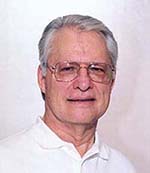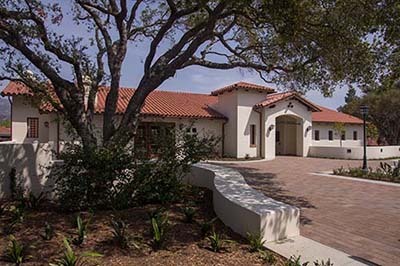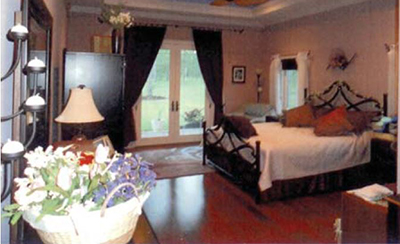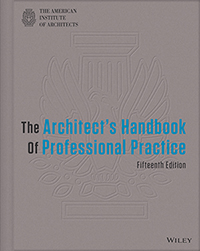|
|
May 2014 Issue
Letter from the Chair
By Vicki Nelson, AIA, ACHA
This issue of the Blueprints had an overwhelming response of high-quality member submissions. Thank you for your contributions and please keep them coming!
We invite all of you to consider writing or repurposing one or more articles for the third quarter of the DFA newsletter. What can you write about? Anything! Anything, that is, that is related to aging in place, senior housing design, and best practices.
All we ask is that you send us the title of your proposed article and a short paragraph describing its contents. We encourage original submissions and request that you not submit a previously published work. Articles should be 200-800 words in length and are subject to the editor's approval. Illustrations, such as images and design drawings, are encouraged.

|
|
|
|
Features
Small House; One Size Does NOT Fit All
By Steve Leone, AIA, LEED AP

"Right-sizing". Since the Great Recession of 2009, we’ve become all too familiar if not forever, re-defined the term. In the senior living sphere, rightsizing has alternative meaning though not divorced from the pressures of our global economy. The trend towards small house design, more specific to the long-term care segment, is not new but has gained traction and is commonly debated these days.

The Rationale and Approach for the Integration of the Principles of Universal Design in all Housing
By Walton D. Dutcher, Jr.

I see many articles and contractors websites that compare Universal Design with Barrier Free design, Visitability, and Accessible design. There is a lot of focus on features and products but rarely do they discuss the design process and spatial guidelines. All this tells me is that the author is quite uninformed.

Resident Input Improves Design of Activity Building at Santa Barbara Retirement Community
By Ruth Grande

When he helped snip the opening ribbon at the standing-room-only dedication of the LifeCenter, Samarkand resident Don Archer opened the doors on a building designed with resident input from the ground up. The Samarkand, a faith-based, not-for-profit, continuing care retirement community operated by Covenant Retirement Communities, officially dedicated the 9,527-square-foot, two-story building on April 7.

Bedroom Addition Provides In-Home Healing
By Charles Schwab, Architect, AIA

In -home patient recovery is a growing phenomenon. Because of this, in -home nursing health care is one of the fastest growing fields of employment. Demand will continue to grow as the “boomers” age and growing financial pressure on Medicare and Medicaid encourage or perhaps even one day require that people recover at home, saving hospital costs.

In the News
Joining the DFA Blueprint Committee is Shelly-Anne Tulia Scott & Sam Beall – Enterprise Rose Architectural Fellows Working on Senior Housing
The Enterprise Rose Architectural Fellowship partners early-career architects with local community development organizations for three year fellowships, where they facilitate an inclusive approach to development that brings all stakeholders together to create green, sustainable, affordable communities.
The fellowship has three primary objectives:
- Invest in the next generation of leadership in community and public-interest design
- Invest in non-profit housing organizations, increasing their capacity in design and development while also articulating a new vision
- Cultivate knowledge in the industry, providing critical data on the challenges and barriers to achieving design excellence in affordable housing, and concrete examples of how to overcome them.
Two fellows are currently focused on affordable senior housing. Sam Beall, AIA, is working with Cathedral Square in South Burlington, Vermont. Shelly-Anne Tulia Scott, AIA, is working with Presbyterian Senior Living (PSL) in Dillsburg, PA.

Exciting News: Publication of New Design Guidelines that Support Person-Centered Care
By Jane Rohde, AIA, FIIDA, ACHA, AAHID, LEED BC+D, GG-CIEB Assessor

The Facility Guidelines Institute (http://www.fgiguidelines.org/about.php), an organization dedicated to creating a minimum design and construction guideline for state licensing agencies, has completed the four year revision cycle resulting in the new Guidelines for Design and Construction of Residential Health, Care, and Support Facilities (published in May 2014), as well as its sister document, Guidelines for Design and Construction of Hospitals and Outpatient Facilities (published in March 2014).

The Architect's Handbook of Professional Practice (AHPP), 15th Edition
For the first time and exclusively for AIA members: Get the chapters of The Architect's Handbook of Professional Practice, 15th ed. Select chapters of your choice are sold individually and accessed electronically, costing only $19.95 while the full tome costs $225.
 |
|
Authored by The American Institute of Architects (AIA), the chapters are the updated architecture profession's standard on practice issues. These indispensable resources cover all aspects of architectural practice, including legal, financial, marketing, management, and administrative issues. Content is significantly revised to reflect the changing nature of the business of architecture related to the impact of integrated practice.
Hear about the Handbook from executive editor Rena Klein, FAIA, on YouTube. |

Upcoming Events
Building for Boomers (Free DFA Webinar)
Tuesday, June 3, 2014 | 3:00 - 4:00 pm ET | Earn 1.0 AIA HSW LUs | Learn more
This course will be an in-depth description of baby boomers and their preferences in housing based on the the book Building for Boomers (part of the McGraw-Hill Construction Series series, which also includes, for example, Building Information Technology, BIM, Green Architecture and 16 other books on emerging ideas in Architecture).
 |
Learning Objectives
Participants will be able to:
- Understand Baby Boomers design preferences and the historical impact of previous generations on those preferences and needs
- Identify, compare, and contrast the various community types for an aging generation
- Understand the essential elements in creating a successful community, including the seven principles of Universal Design
- Develop several methods for and understand critical factors effecting the creation or renovation of existing structures to include accessory dwelling units or second living units
|

Experience the Café Plus Concept for Yourself
Monday–Wednesday, June 9–11, 2014 | 9:00 a.m.–4:30 p.m.
The award-winning Café Plus concept is designed to attract active, younger-older adults (age 50 and better) by providing fun and educational, wellness-related programs and activities. Starting with something as simple as a cup of coffee, we engage older adults to achieve endless possibilities.
Your organization can adapt the Café Plus model and increase outreach and engagement with older adults in your community. Join us for a comprehensive three-day workshop which covers the how-tos for creating your own Café Plus experience from top to bottom. We cover everything from effective marketing and budgeting strategies to customer service training, plus you’ll visit a Café in action, and take home the Café Plus Toolkit—your blueprint for putting everything you learn into practice!
To register, for questions, or to request individual consultation to design a Café Plus for your organization, please contact Betsie Sassen: (847)-492-6806 or bsassen@matherlifeways.com.
For more information, please visit www.matherlifeways.com/cafe-plus-model.
DFA Events at 2014 AIA National Convention

Post Occupancy Evaluation Toolkit: Sharing POE Approach Developed by the AIA Design for Aging Knowledge Community
Thursday, June 26 | 7:00-8:00 AM
The AIA Design for Aging Knowledge Community Advisory Group and the Design for Aging Review Task Force have refined a process of conducting credible and informative POEs which is published as the "AIA Design for Aging Post Occupancy Evaluation Toolkit." This program will review the definition of a POE, the three types of POE that may be considered, and the detailed process of conducting an "investigative" POE.

Design a Future of Vitality in Aging: Navigate Limits, Expand Choices, Multiply Outcomes
Friday, June 27 | 4:00-5:30 PM | Earn 1.50 AIA HSW LUs + RIBA
Are we designing for aging or from our angst of "the aged"? This session marshals emerging outcome data on core characteristics of aging that contribute to vitality, to the ability to experience life and function effectively (despite notable changes).

Thinking Beyond the Building: Aging-in-Place and Lifelong Communities
Friday, June 27 | 6:00-7:00 PM | Earn 1.0 AIA HSW LUs + RIBA + GCBI
Learn the facts and statistics that are facing the nation regarding the aging of our population and the housing crisis it will bring. Examine projects for appropriate location, density, and intensity to understand the basic needs and incorporate healthy living choices for all ages in neighborhood design.

|
|
|
|
|
|